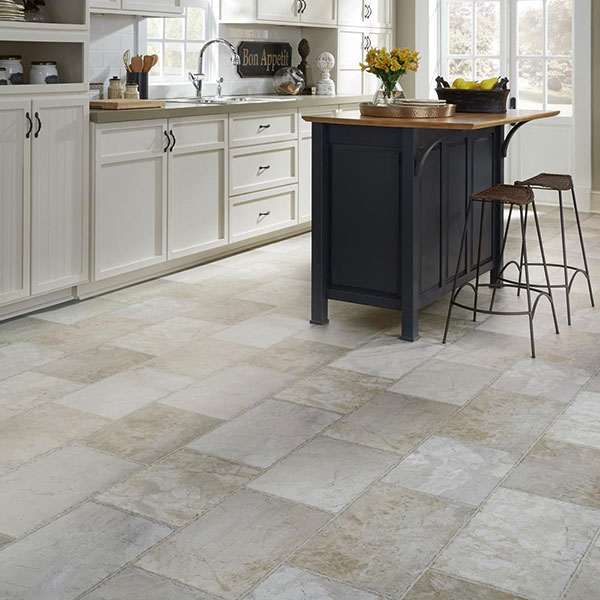
Flooring Merchant - Laminate, Tile, & Hardwood Flooring Ohio
REQUEST A CALL BACK
Do you want to quickly make a statement with your home’s interior design? Flooring is one of the best and quickest ways to do that. However, no matter what design you have in mind, the type of material you choose can either make or mar the whole appearance of your home.
At Firenza, we have an almost endless list of flooring options to serve your sense of style and lifestyle in any city. We specialize in tile flooring, hardwood flooring, laminate flooring, and engineered wood flooring for your residential or commercial needs.

From a range of brands for every budget and lifestyle.
Cabinetry built to last.
From restorations of your existing cabinets to fully customized options, we’ve got it all!
Flooring for Every Lifestyle in Ohio
For every flooring project, we have the perfect material, the best designs, and the finest patterns to choose from. Every product in our showroom is either made from natural materials or the latest in engineered products in every style and species.

Hardwood Flooring
Solid wood choices include oak, bamboo, maple, cherry, hickory, walnut, and rosewood. Available in multiple widths as solid ¾" or in engineered versions in several configurations. Hardwood floors look good in all kinds of home decor; require low maintenance and are easy to clean; add value and sophistication to your home; improve the quality of air; and never fade; to crown it all, they are long-lasting and cost-effective. It is highly recommended.

Luxury Vinyl Flooring
Luxury vinyl plank replicates both tile and wood by using 3D printing technology to add depth and realism. They have a high-performance wear layer. Many products in this category offer a moisture barrier backing and are floating floors.
The luxury vinyl floor is highly affordable, durable, easy to clean, and requires little flooring installation effort. They are also waterproof and come in authentic designs.

Natural Stone Flooring
Pure stone tile refers to a variety of mountain-born mineral substances that stand in contrast to any synthetic or manufactured stone products. Common pure stone flooring includes slate, marble, limestone, travertine, granite, and sandstone. Natural stone floors are usually the best match for any kind of home. They fit perfectly into the bathroom, basement, kitchen, garage spaces, and even living room. They're family-friendly and stain-resistant, and give you a vast selection of different options to try out. We strongly recommend that this bright and textured material be used both indoors and outdoors.

Laminate Flooring
Laminate floors are multi-layer synthetic products fused with a lamination process. They simulate wood or stone with a photographic applique layer under a clear protective layer. Unlike hardwood flooring, laminate flooring installation is a great project for DIYers as it requires little to no use of grout. They're easy to clean, built for durability, highly affordable, scratch and water-resistant, and have a wide variety of styles and designs.

Tile
Manufactured tile refers to porcelain, ceramic, and baked clay. Tiles can range from simple square tiles to complex mosaics. The tile floor is one of the most popular materials to use in the bathroom floor and walls, kitchen space, bedrooms, offices, and stores. This is due to their versatility, easy installation, pollen resistance, and more. Tiles are the top choice for every international or local flooring expert. They're also very durable and come at budget-friendly prices.
Functionality and Luxury
It’s high time you brought back functionality and luxury to your home with our massive selection of flooring materials.
- CONCEPT TO COMPLETION
- Quality Promise
- UNBEATABLE DESIGNS
Practical flooring for everyday use
We want you to see for yourself what we do and say we are. We have thousands of flooring materials for you to choose from to help bring your home to life.
Do you want flooring materials that will endure everyday use in your busy family home or business area? That's exactly what you'll get from our shop.
Timeless products that have stood the test of time
Our products are perfect for any project and can assure you of timelessness as they're both durable and aesthetically assuring even for the far future.
Matchless flooring installation service
From choosing the right flooring to getting it installed, Firenza offers matchless services. Our customers are happy to recommend us to friends and loved ones because they trust the quality of our work.
Classic styles, designs, and colors
Every stone, every wood, every engineered material, Firenza helps you make a statement of class and sophistication.
For all your flooring needs, Firenza has the perfect material. From porcelain to hardwood to engineered wood to laminate and other tiles, we're here when you decide to take the bold step on your next project.
Professional and excellent customer service
Our professional customer service agents are eager to hear about your flooring issues and offer you the best flooring solutions for your dream home. We are highly proactive and willing to attend to your questions.
Want to make your house a home? Pick up that phone, reach out to our company for an estimate or visit our showroom today to see some of the most beautiful flooring samples you'll ever find.
Areas We Serve
-
Cleveland, OHCleveland, OH
-
Eastlake, OHEastlake, OH
-
Beachwood, OHBeachwood, OH
-
Chagrin Falls, OHChagrin Falls, OH
-
Mentor, OHMentor, OH
-
Akron, OHAkron, OH
-
Canton, OHCanton, OH
-
Northern Columbus, OHNorthern Columbus, OH
-
Sandusky, OHSandusky, OH
-
Solon, OHSolon, OH
-
Highland Heights, OHHighland Heights, OH
-
Willoughby, OHWilloughby, OH
-
Hudson, OHHudson, OH
-
Kirtland, OHKirtland, OH
-
Erie, PAErie, PA
BEGIN YOUR JOURNEY TODAY
Connect with our trusted design team to answer your questions or to schedule an appointment to begin the journey to your dream home.
What Our Customers Are Saying
Blogs & Insights
Navigation
Hours of Operation
Mon: 9am-5pm
Tues: 9am-7pm
Wed: 9am-5pm
Thurs: 9am-7pm
Fri: 8am-4pm
Sat: 9am-3pm
Sun: Closed
Copyright © Firenza Stone 2024. Powered by Milia Marketing



